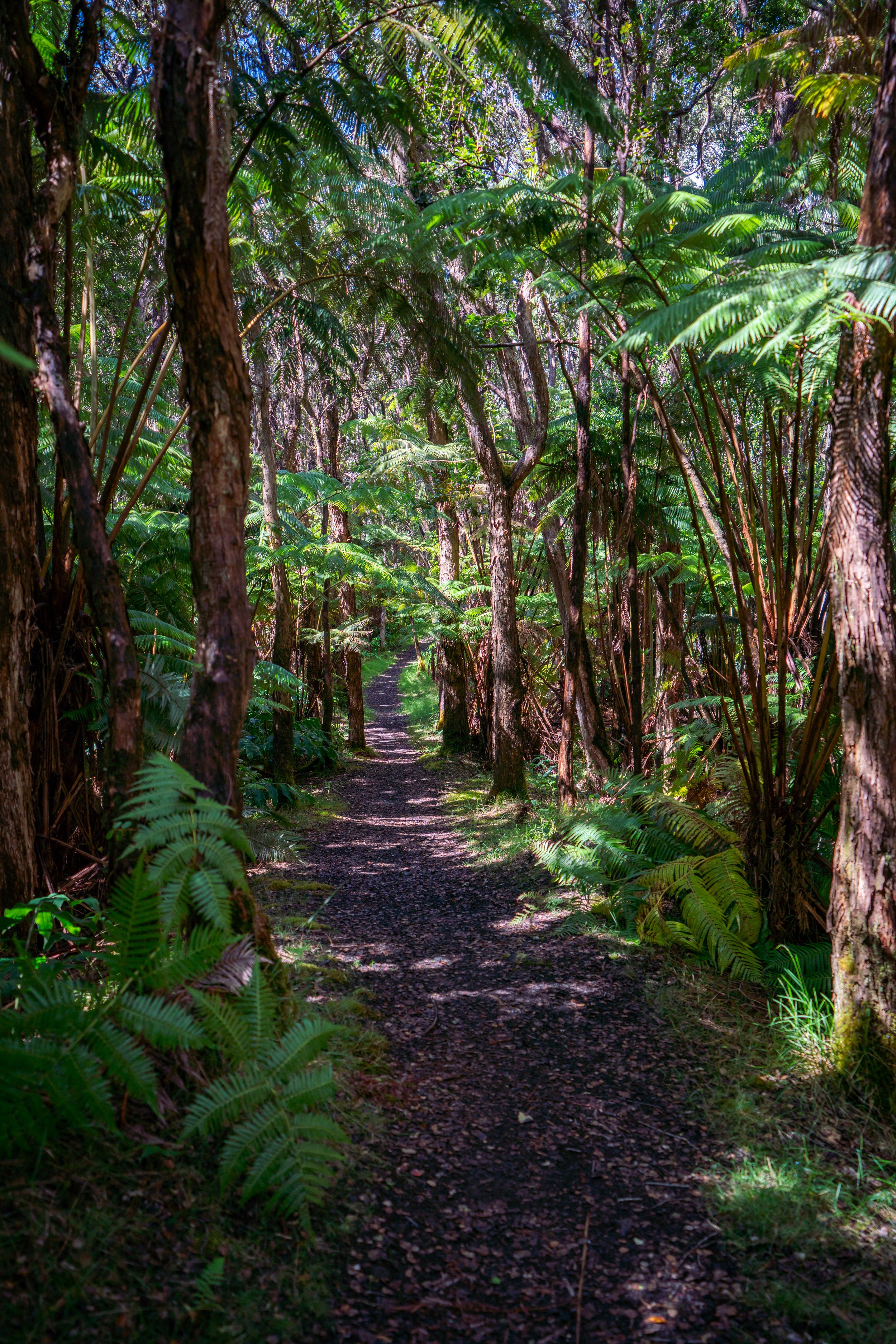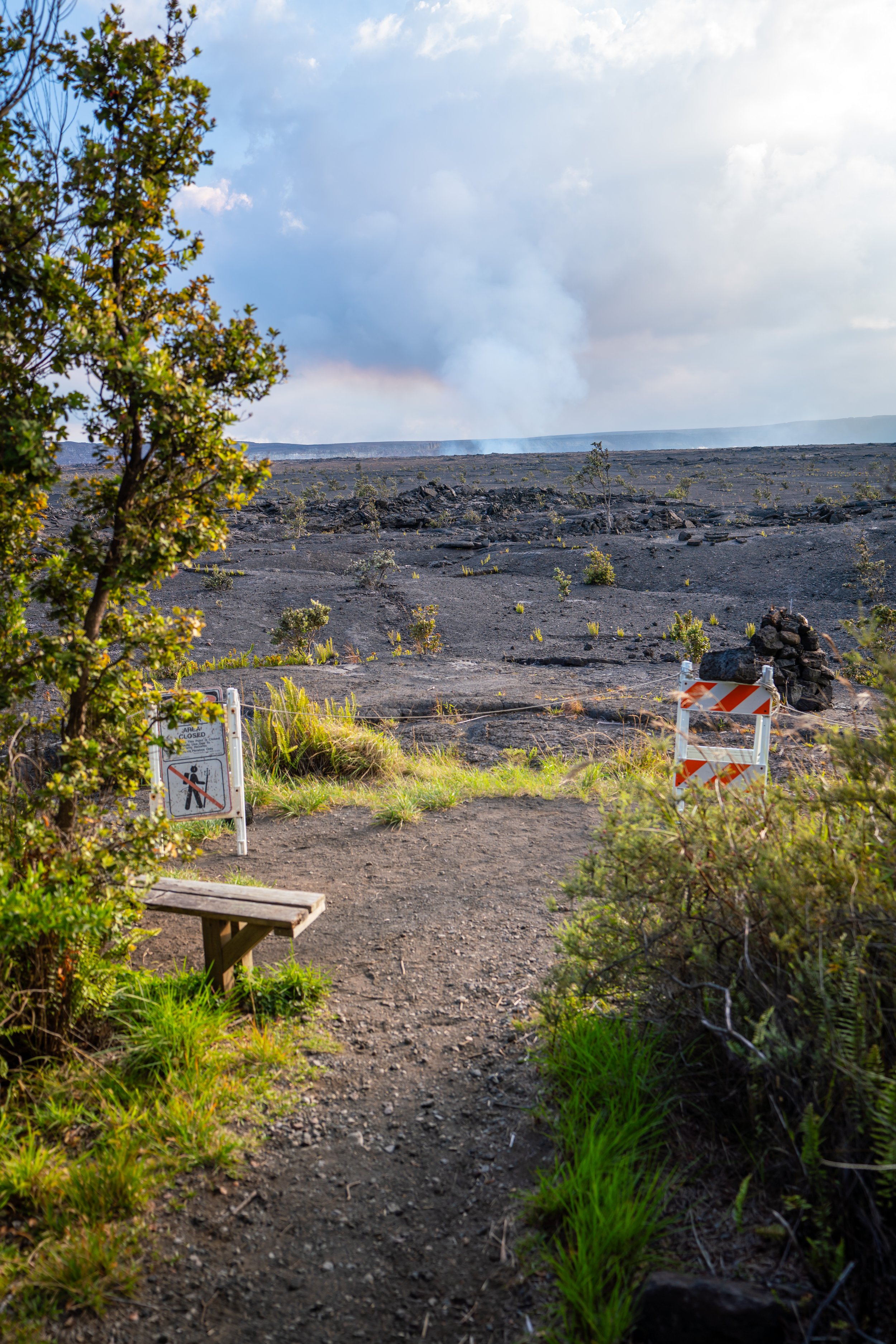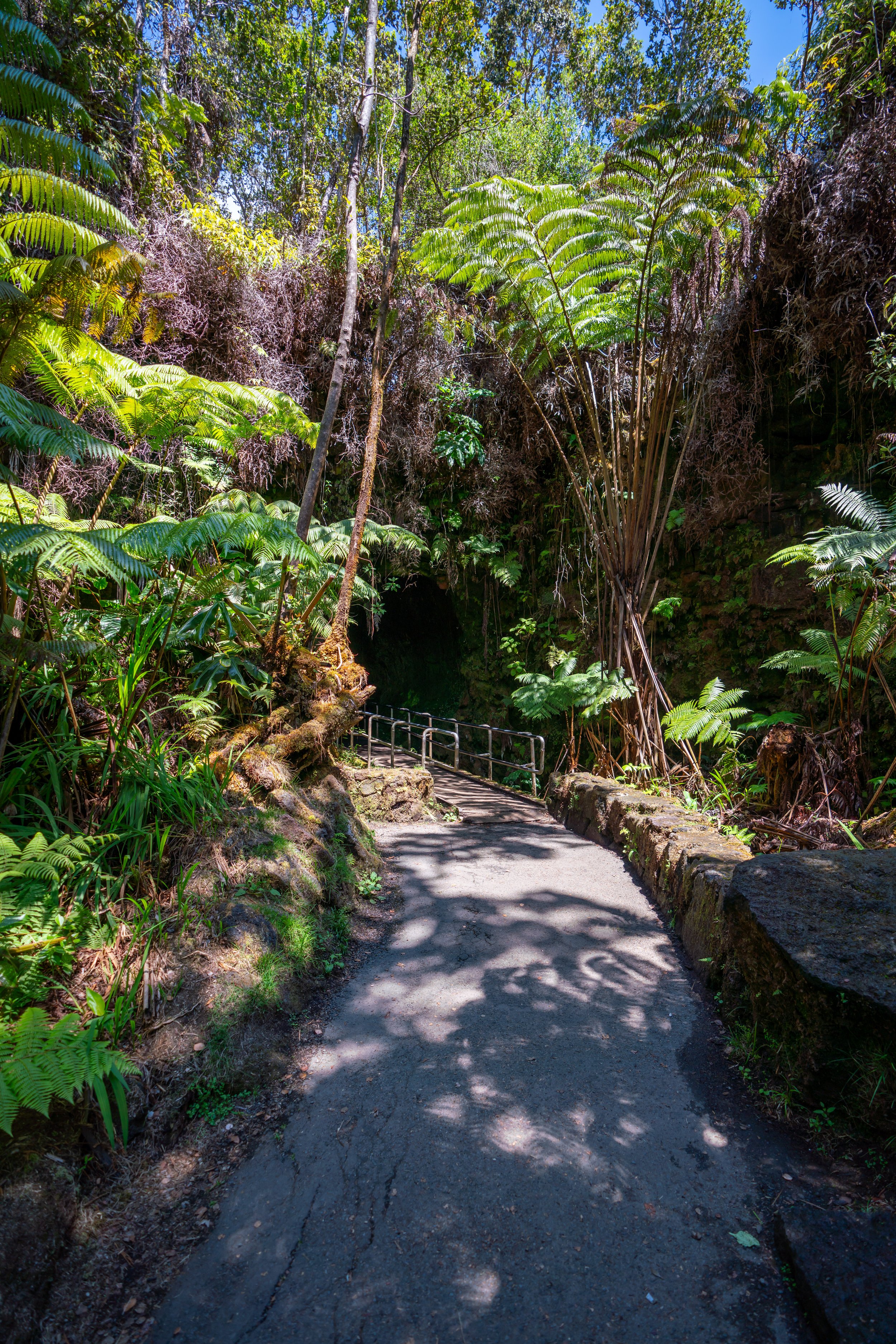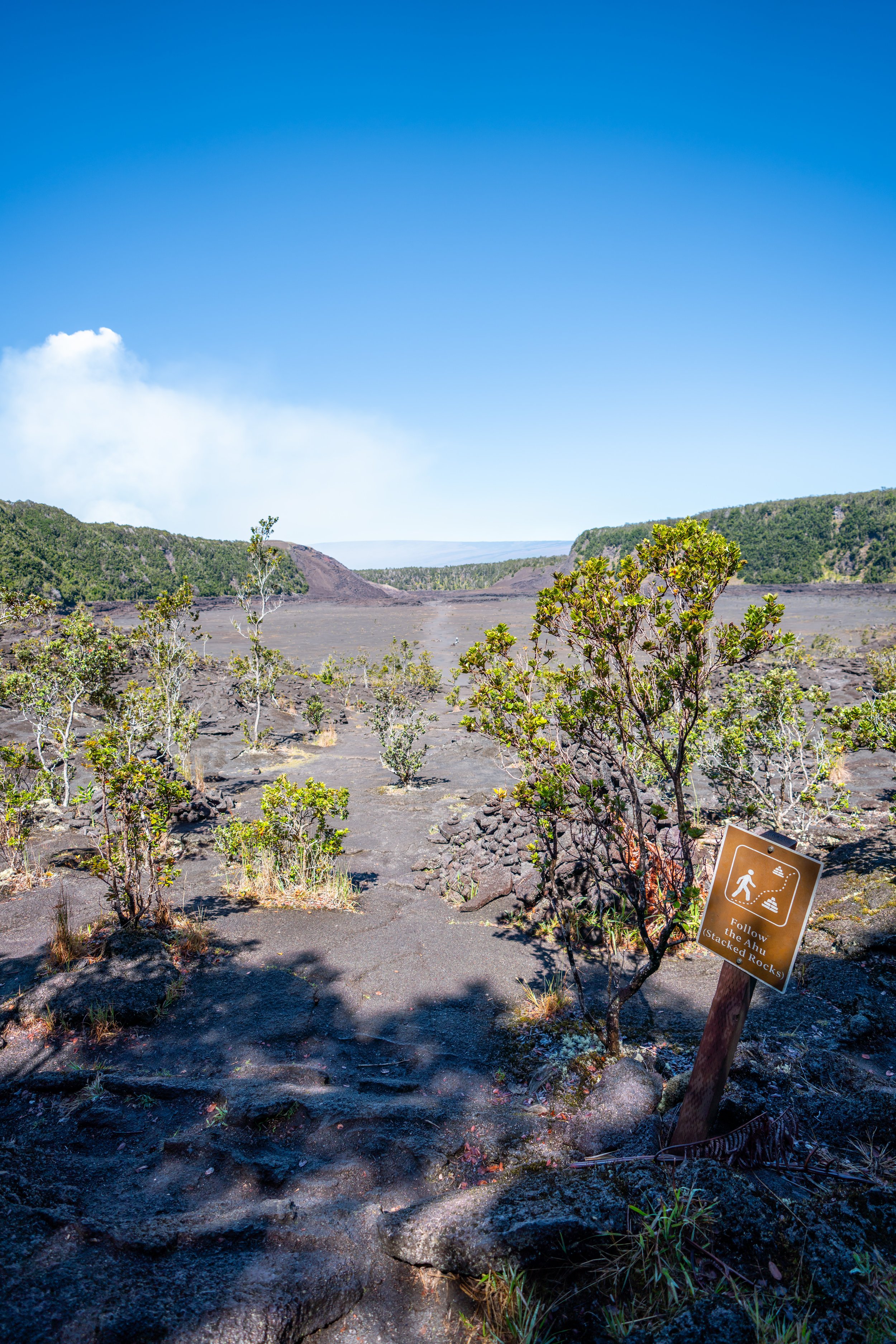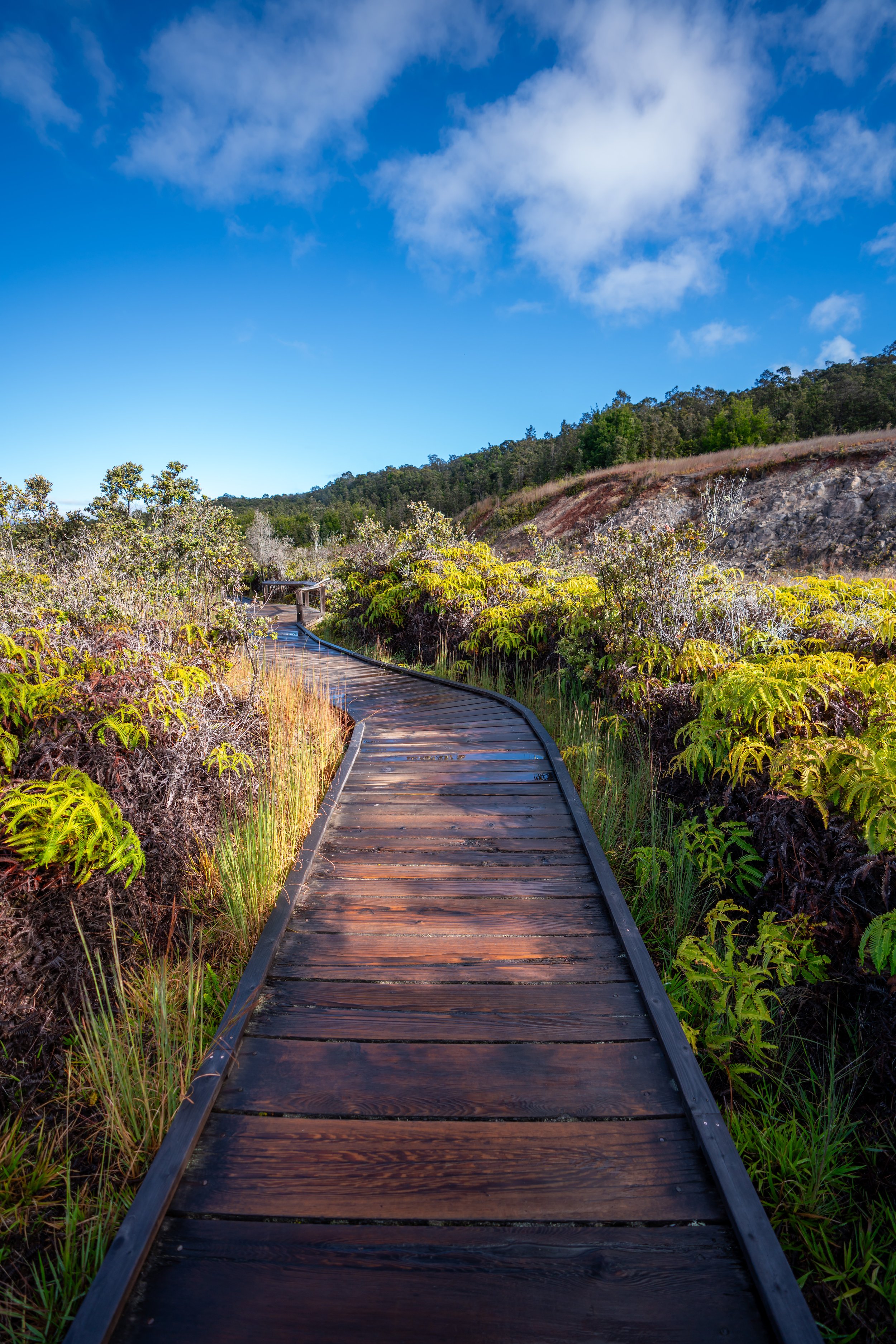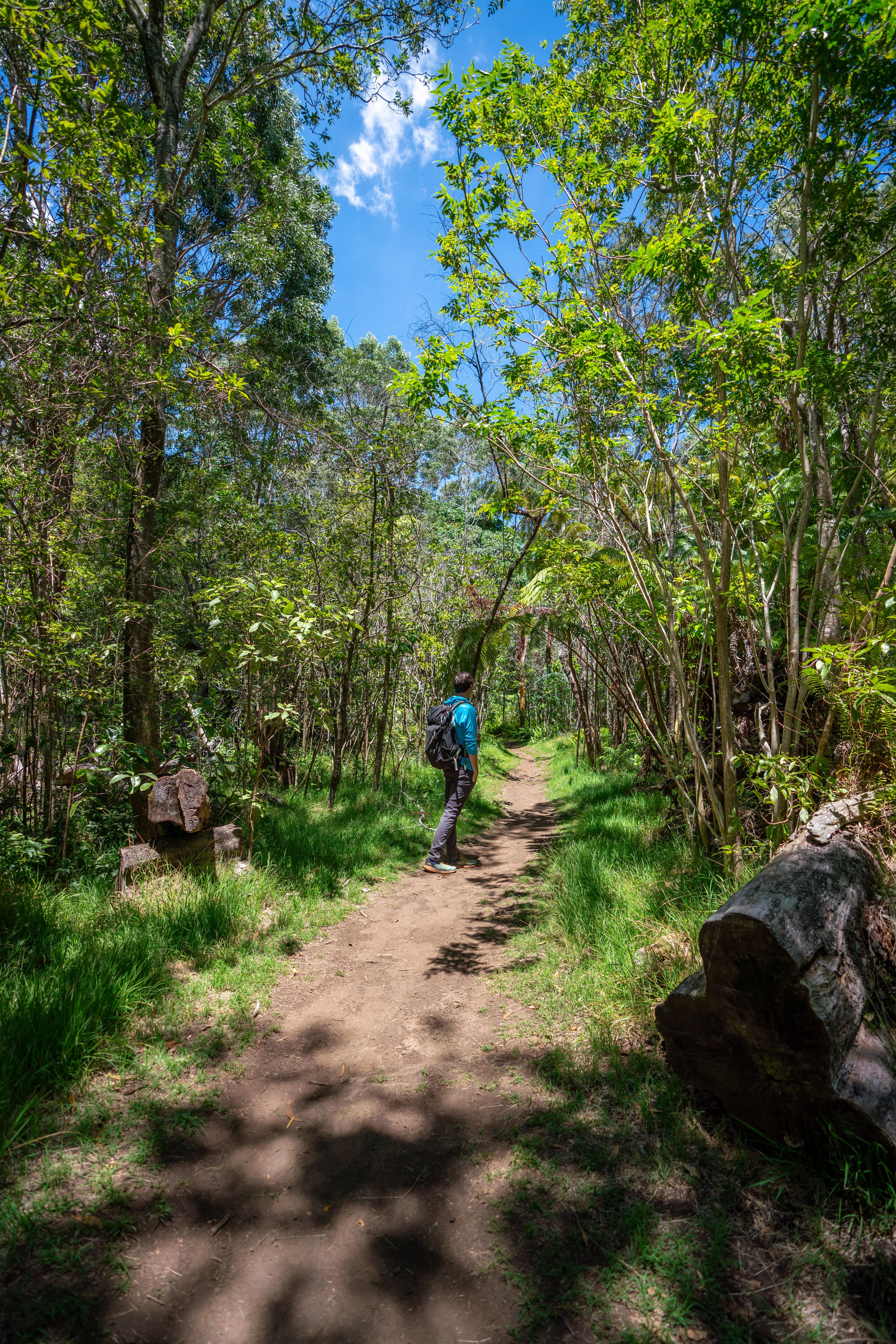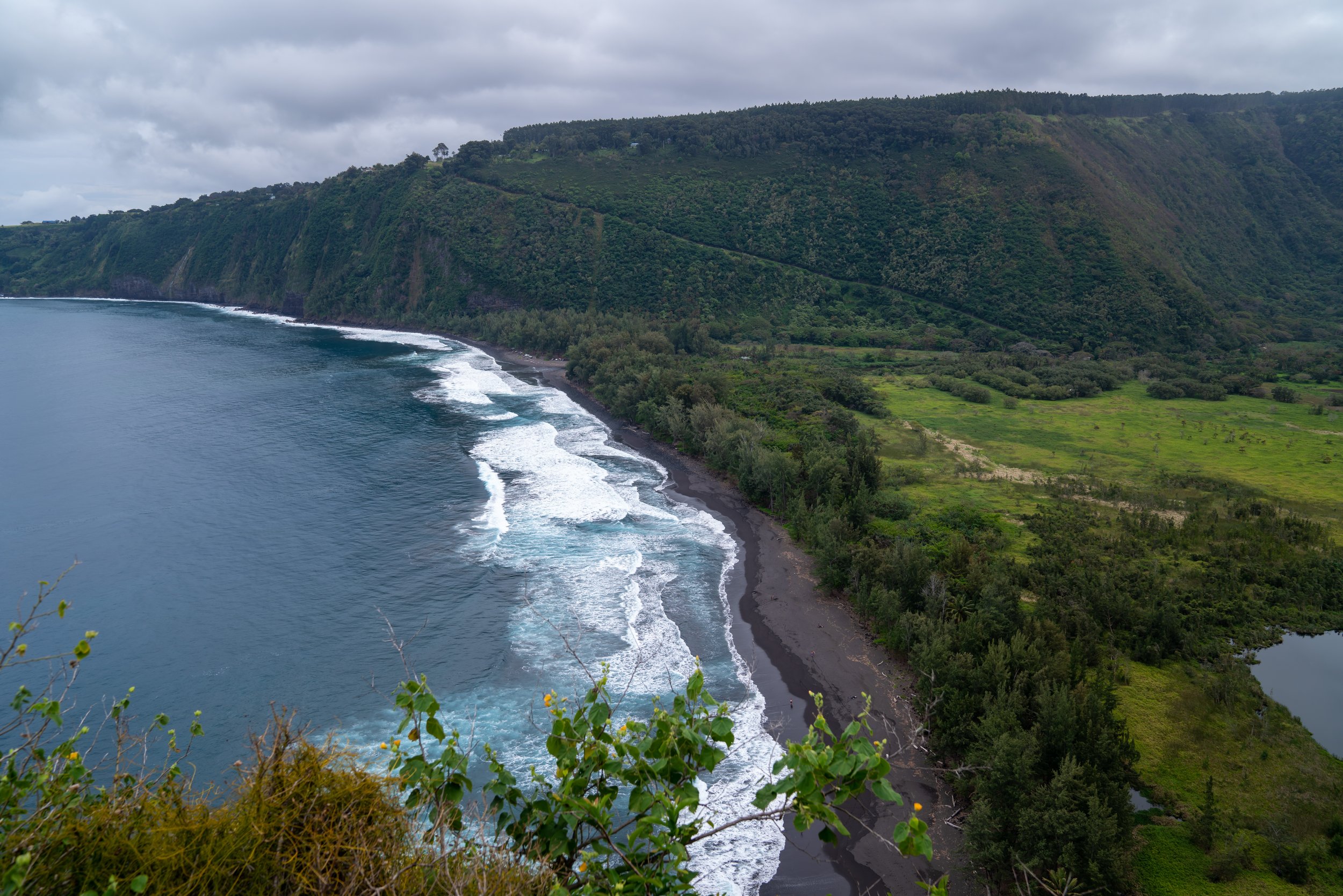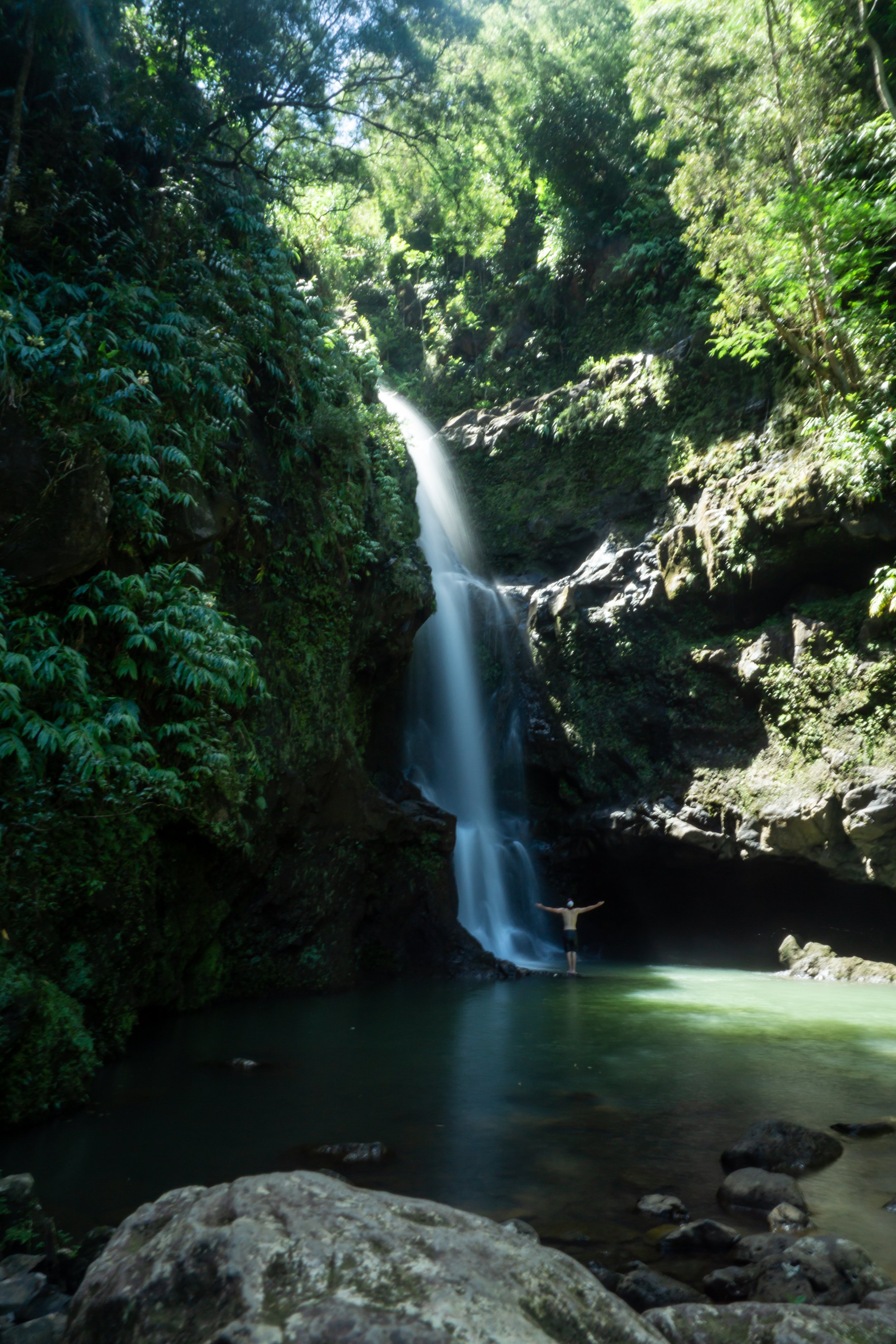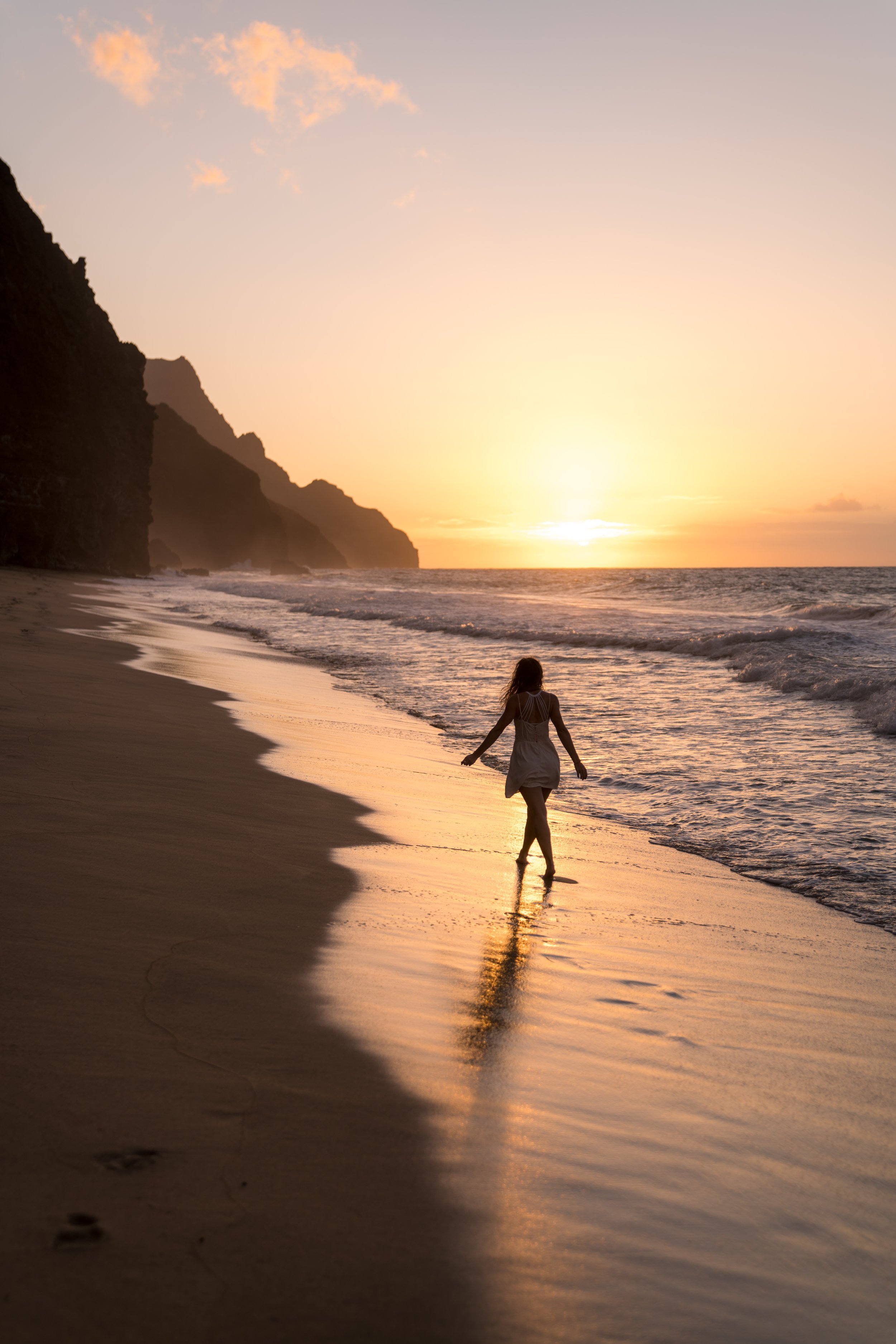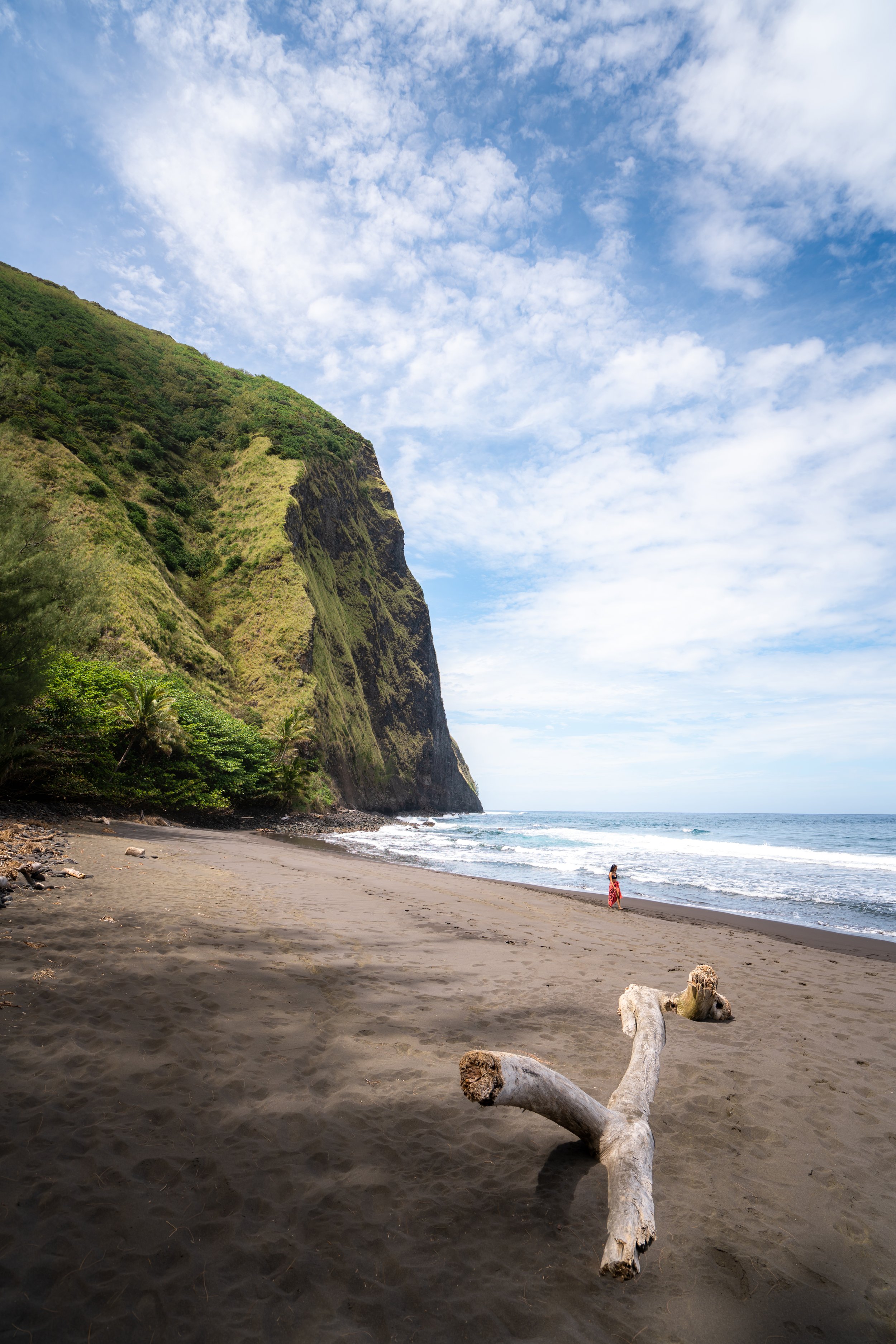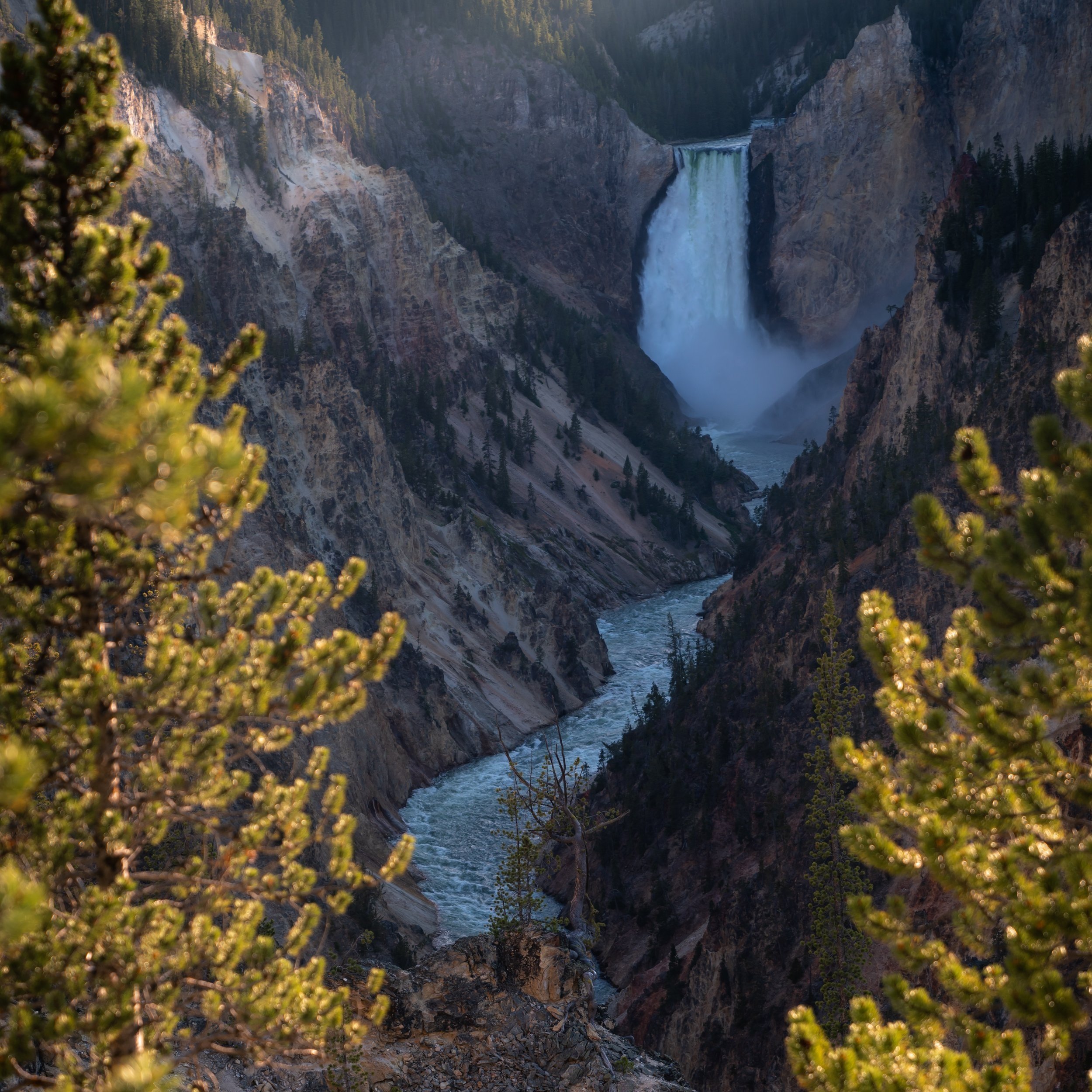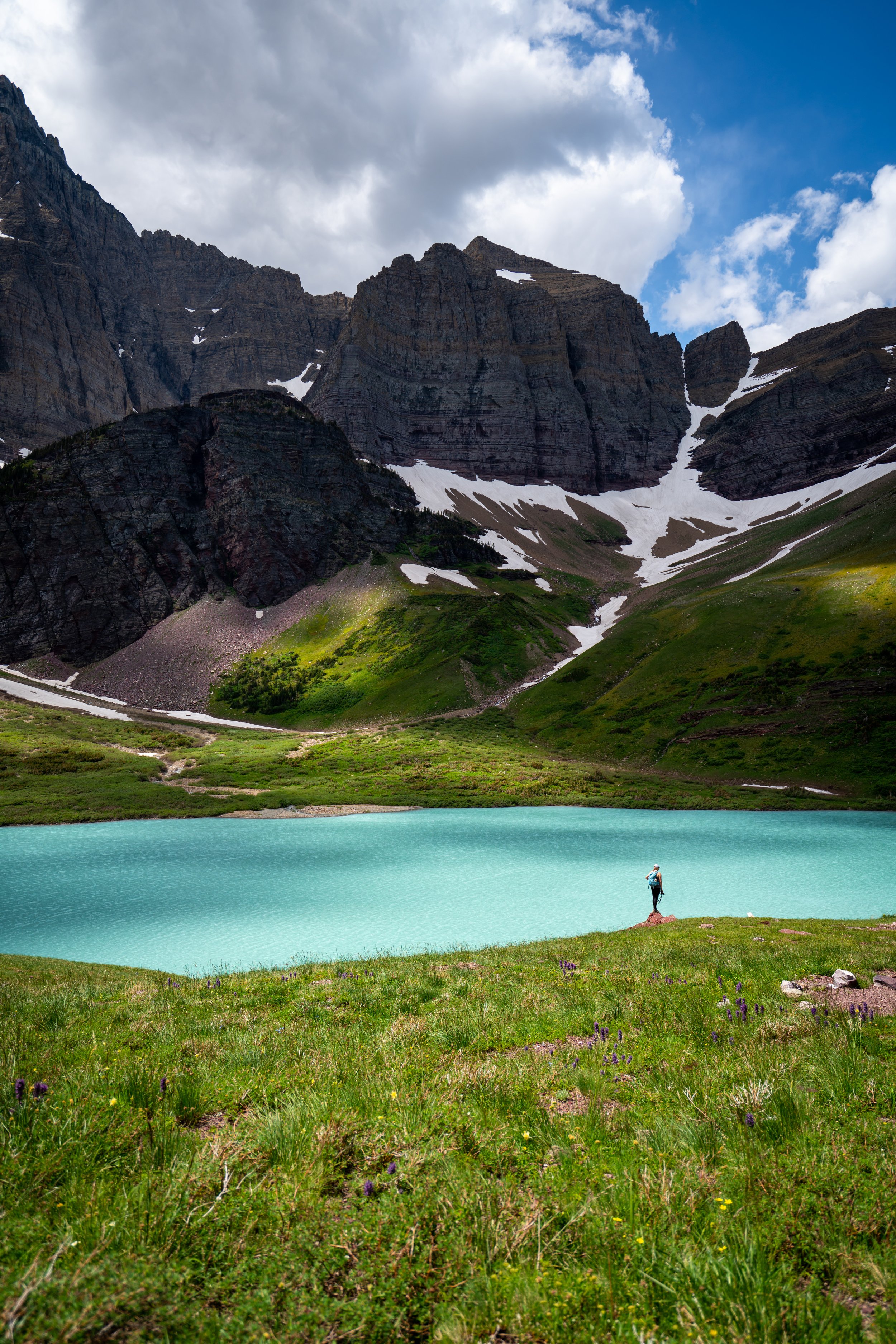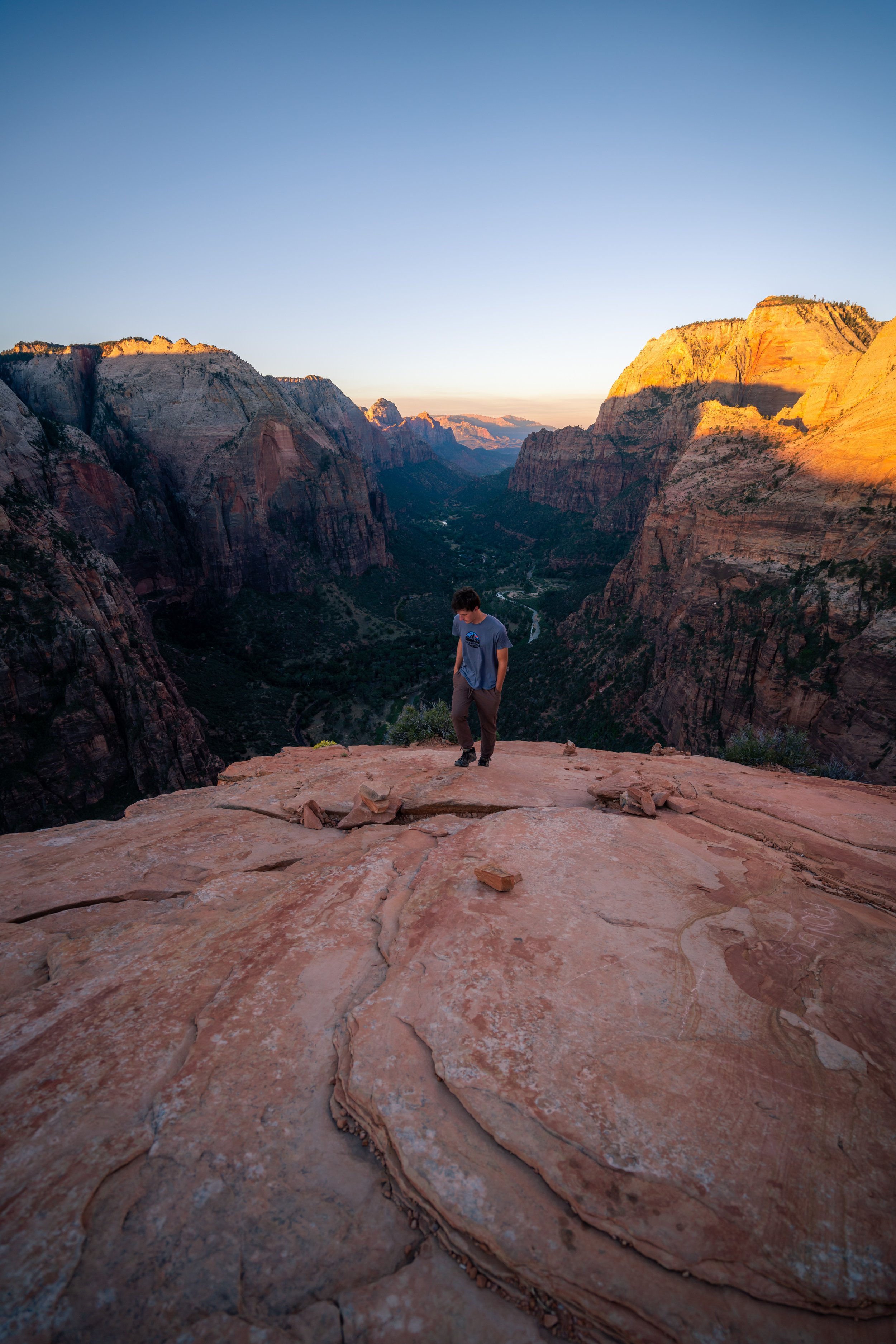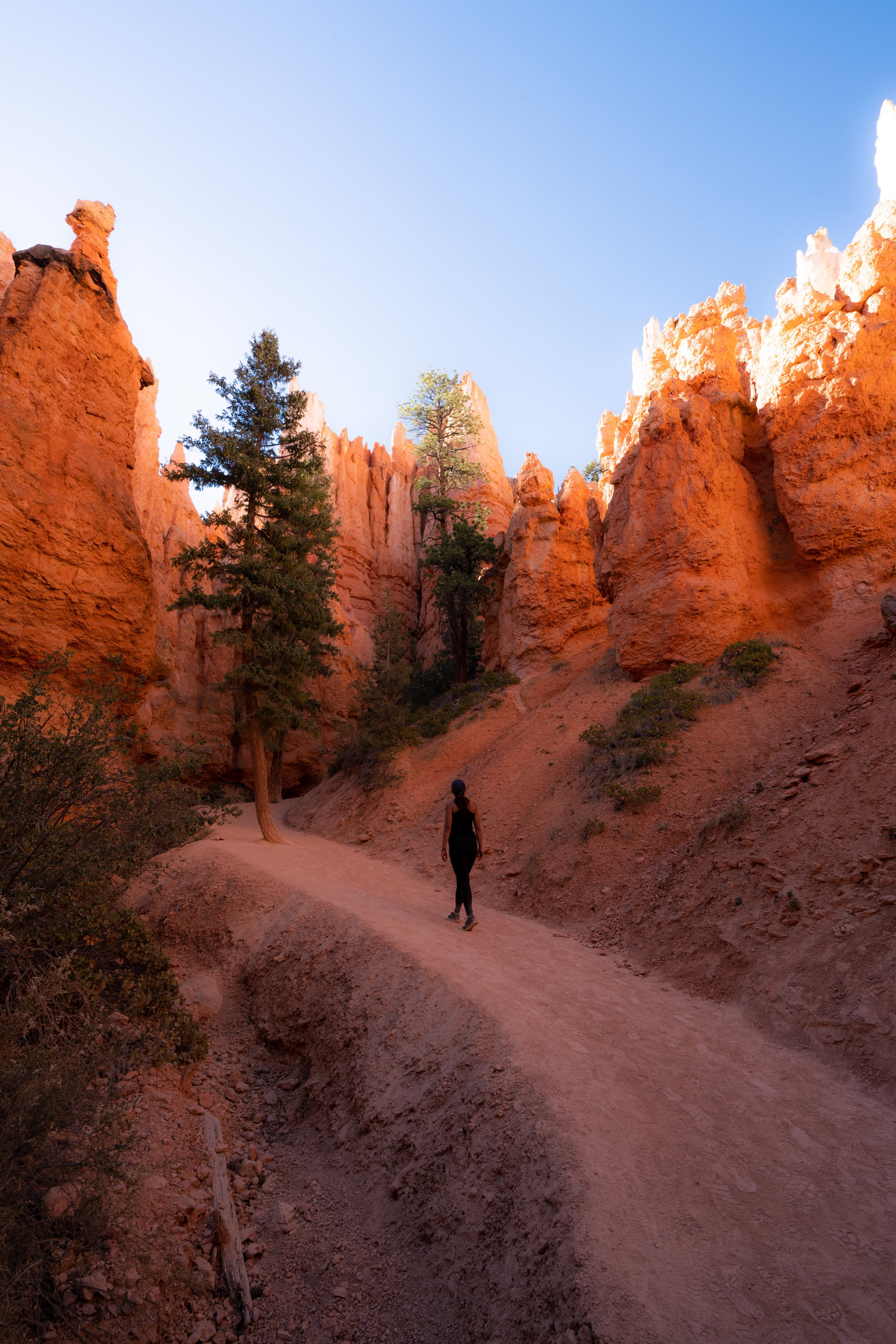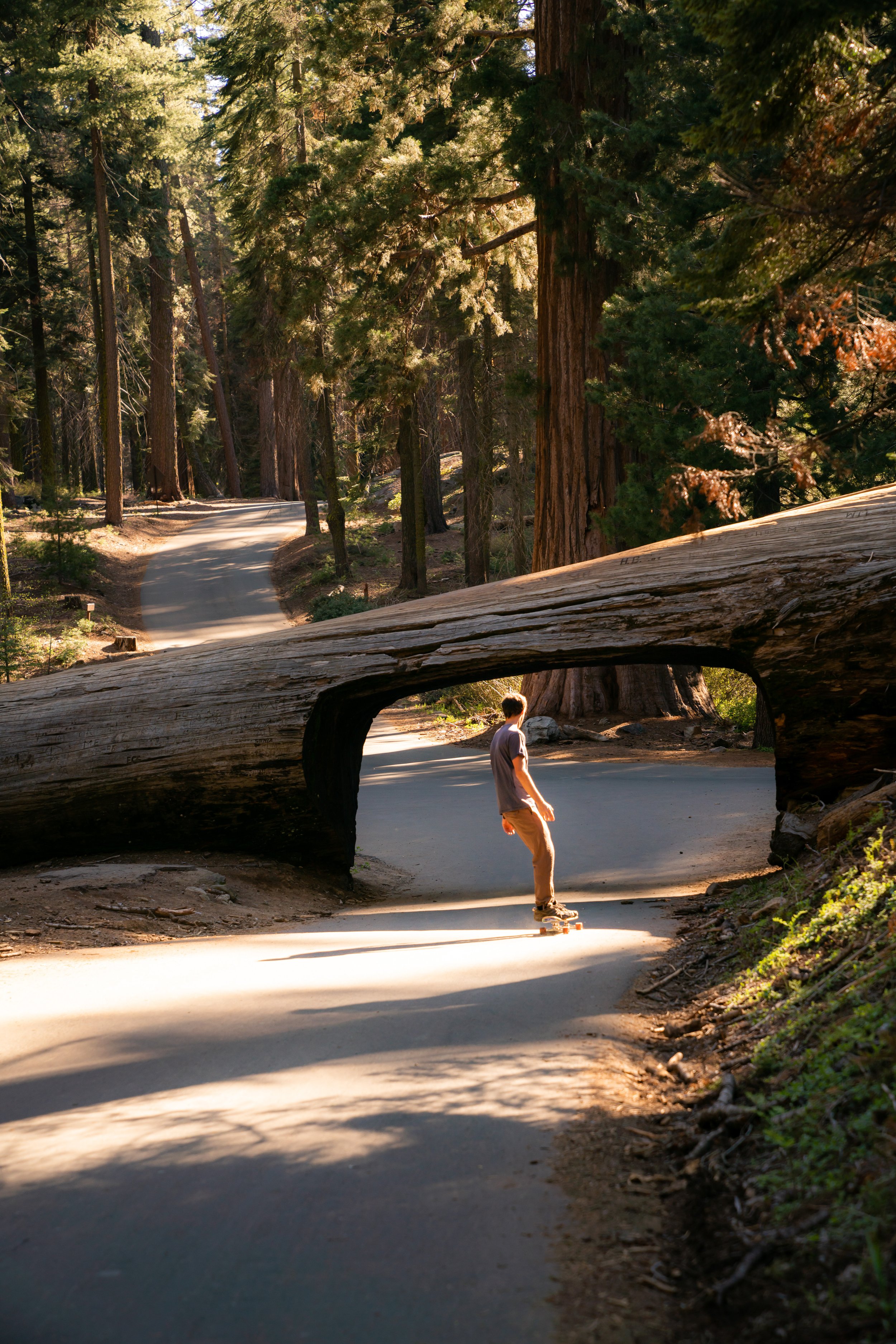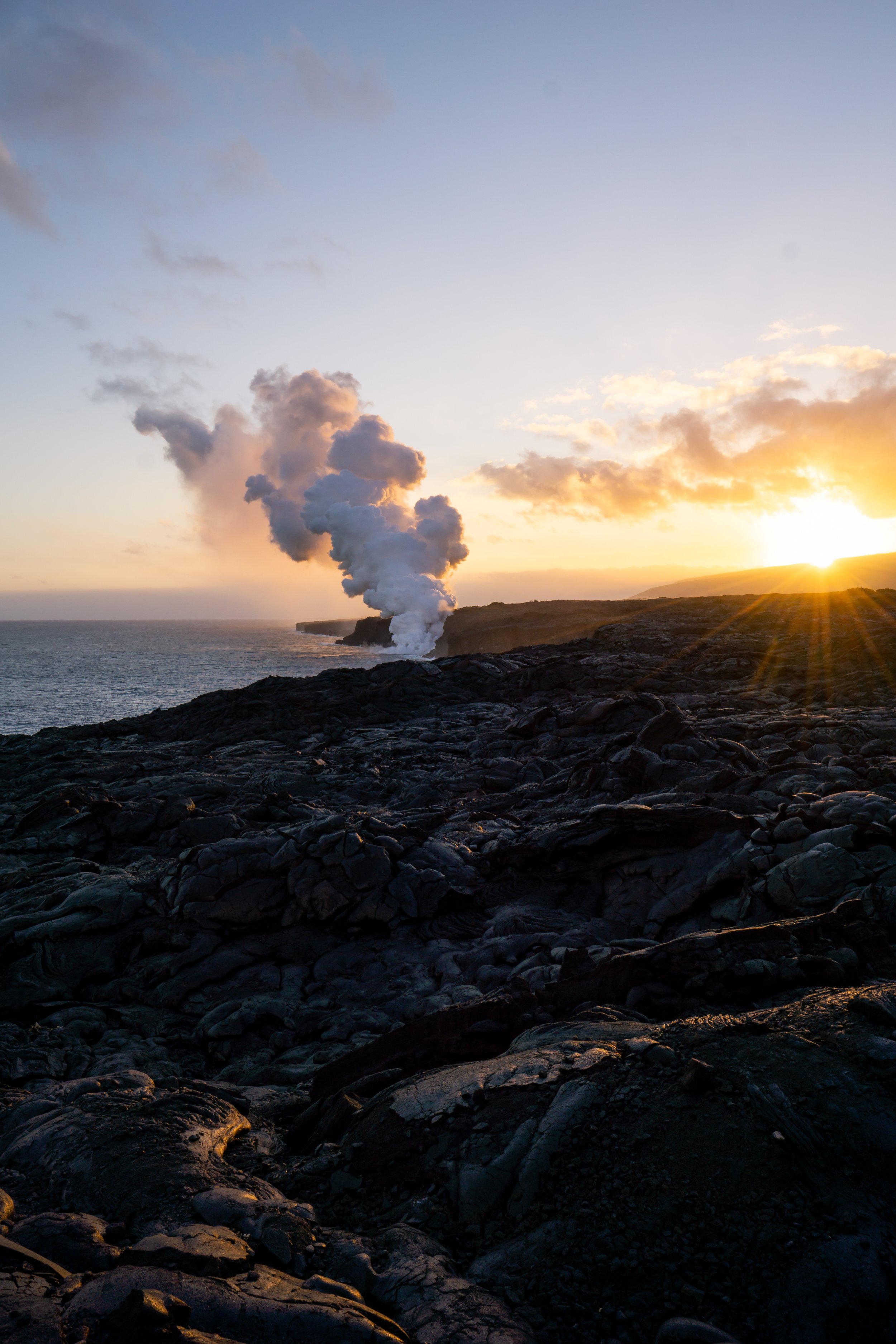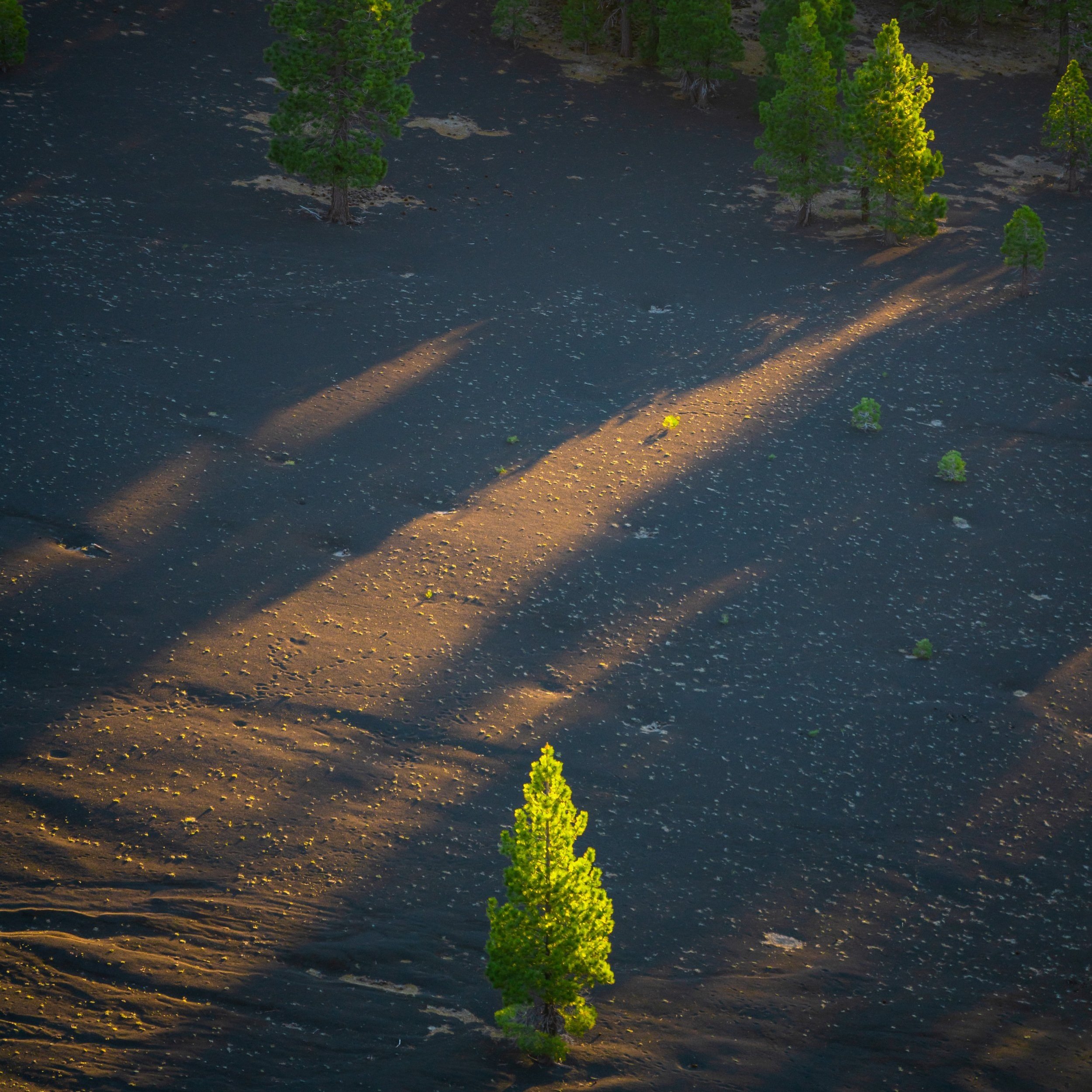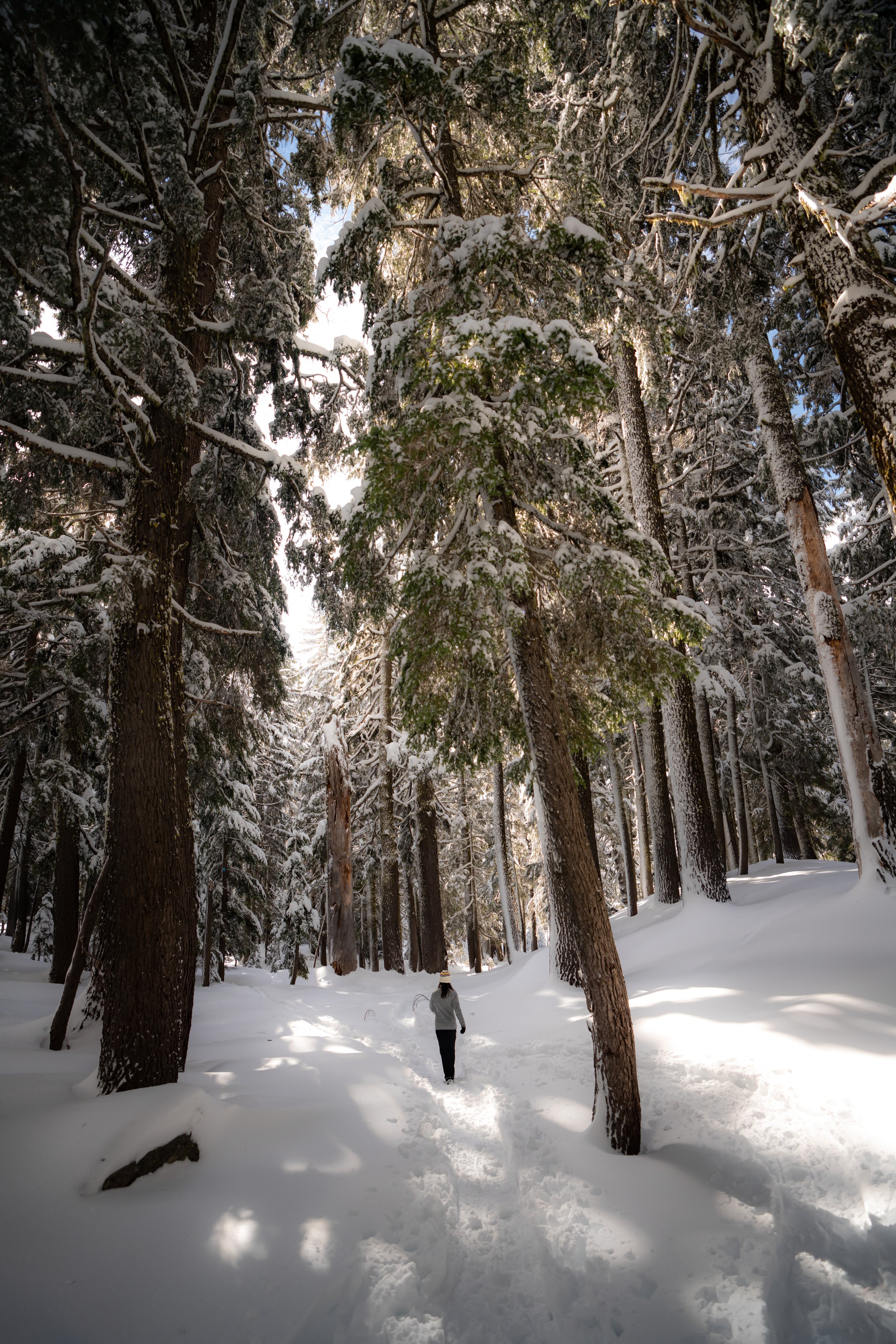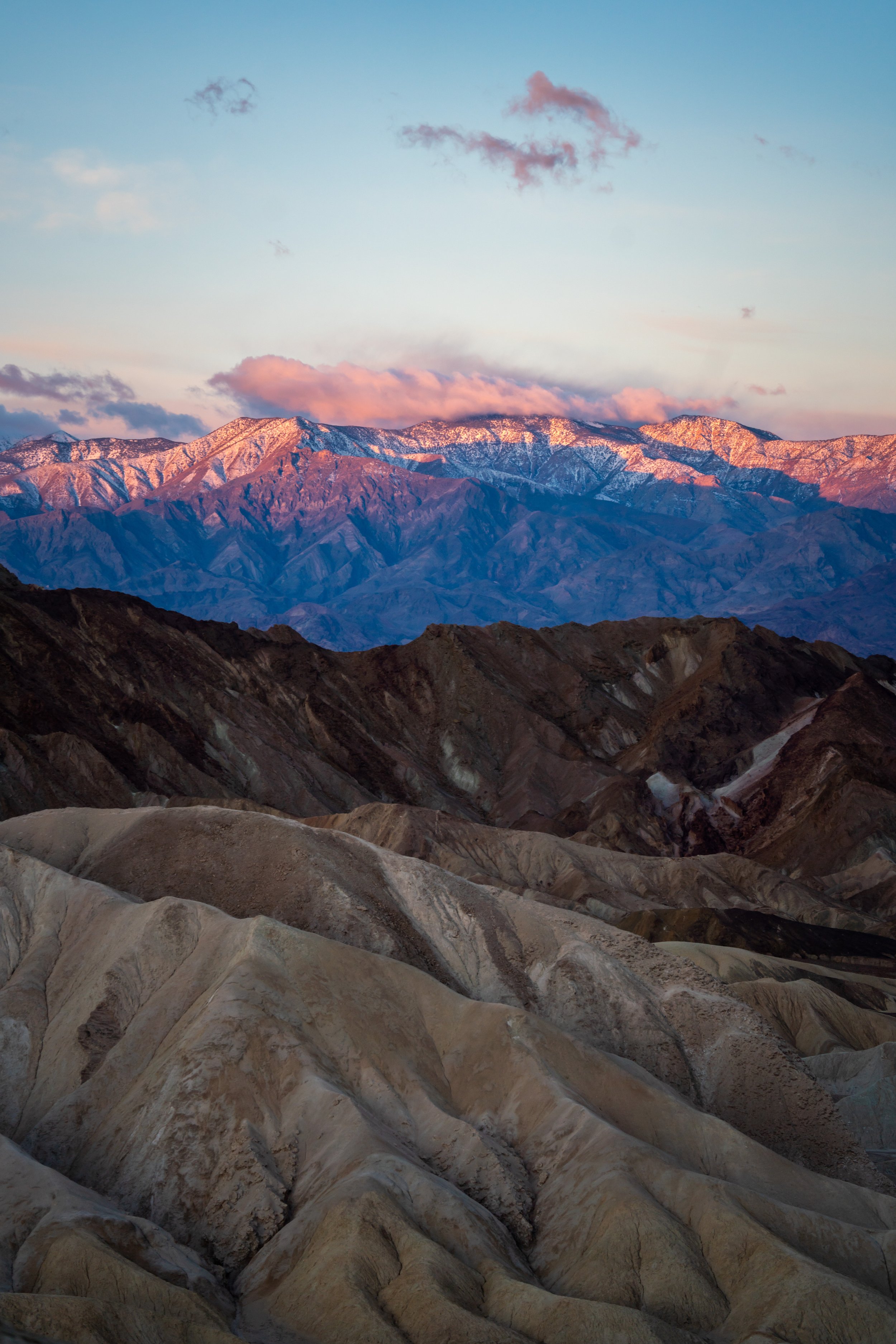Hiking the Mauna Loa Trail to Red Hill Cabin (Puʻu ʻUlaʻula) in Hawaiʻi Volcanoes National Park
Distance (Roundtrip to Puʻu ʻUlaʻula): 15.0 miles / 22.5 km
The Red Hill Cabin, also called the Puʻu ʻUlaʻula Cabin, on the Mauna Loa Trail is one of the best of the eight backcountry adventures within Hawaiʻi Volcanoes National Park—perhaps second only to the Mauna Loa Summit Cabin, further up the mountain!
That said, the Mauna Loa Trail to the Red Hill Cabin can be hiked in one day, but Puʻu ʻUlaʻula is best enjoyed as a multi-day overnight backpacking trip—which, in my opinion, is best experienced over a two-night stay in the cabin!
This is especially true because the weather on Mauna Loa can be extremely variable, but multiple nights gave us the opportunity to watch the numerous sunrises and sunsets from one of the best places on the Big Island!
How to Get a Red Hill Cabin Permit?
All backcountry permits in Hawaiʻi Volcanoes can be booked up to 90 days in advance on Recreation.gov using the link below.
That said, it’s important to be aware that there are only eight bunks inside of the Red Hill Cabin, but the National Park Service will issue far more permits than bunks available.
They do this because they allow tent camping outside of the cabin, but when the weather is bad, like it was during our visit, sleeping in a tent would have been miserable. On our second night, more than eight people had permits, which inevitably made some people opt for sleeping on the floor.
This is to say, the bunks in the Mauna Loa Cabin are on a first-come, first-serve basis, so come prepared for any situation.
Book Here: Red Hill Cabin (Puʻu ʻUlaʻula) Permits
Mauna Loa Trailhead Parking
Parking for the Mauna Loa Trail is located at the very end of Mauna Loa Road. The parking lot is very small, and you may need to park along the road if the lot is full.
In either case, the Park Service will ask for your vehicle information, so that they know what cars to expect for overnight trips.
Google Maps Directions: Mauna Loa Trailhead
My Hawaiʻi Hiking Checklist
Obviously, for camping, you will need general backpacking gear. For this reason, I wrote a separate post about what backpacking gear is worth the money, from my experience, and what the best alternatives are to save you money.
Read My Separate Post: Best Ultralight Backpacking Gear
In addition, here is a complete list of must-have things that you will want for any hike in Hawaiʻi Volcanoes National Park.
Osprey 3L Water Bladder - The Osprey 3L water bladder is the most universal hiking and backpacking water bladder on the market, and it’s my go-to because of the slide-off seal that allows it to be quickly filled from the top. Additionally, individual parts are easily replaceable, such as the bite valve.
Blister / Heel Protectors - I swear by these cheap, amazing heel protectors to prevent blisters for nearly every kind of hiking and backpacking that I do!
Black Diamond Headlamp - Personally, I recommend the Black Diamond Storm because it is one of the brightest, lightest, and longest-lasting headlamps on the market—and trust me, the weight-to-battery-life ratio really does matter!
Hiking / Trail Running Shoes - Depending on the type of trail, I prefer to use either the Keen Targhee for longer, more rugged hiking or the HOKA Zinal Trail-Running Shoe for lighter, less intense trails. In either case, both have been amazing to me for many years across countless environments, and both can be found in men’s and women’s sizes. - (Men’s Keen / Women’s Keen) (Men’s HOKA / Women’s HOKA)
Waterproof Rain Shell - You never know when it may rain, and I’ve learned over the years that a rain shell is far better than a rain jacket. By this, I mean that it’s best to have something that the water will roll right off of, which is why I recommend the Patagonia Torrentshell 3L available in both men’s and women’s sizes.
High SPF Sunscreen - Packing high-SPF sunscreen is a must for long days outside!
Hiking the Mauna Loa Trail to the Red Hill Cabin (Puʻu ʻUlaʻula)
The Mauna Loa Trail can be hiked in a single day without a permit, but like I said earlier, the best way to enjoy Red Hill is by camping a minimum of two nights.
We got lucky with two amazing sunrises, but other than the mornings, all of the afternoons and evening proved to be very rainy, with views that would come in and out.
We barely saw a sunset on our second night, and all of these photos up to Red Hill were taken during a beautiful morning as we were hiking down. Our hike up was nothing but cold rain that got worse and worse the higher we hiked.
What felt fine at 7,000 ft. (2,134 m) became pretty miserable by 9,000 ft. (2,743 m).
The Mauna Loa Trail starts out in a mixed Koa-ʻŌhiʻa-Māmane forest before the canopy breaks open within the first 0.25 miles (0.4 km) of the trailhead.
There are two ungulate fences on the Mauna Loa Trail to protect the native vegetation on the inside.
Please close these gates behind you.
Elevation 7,000 ft. (2,134 m)
After a short distance into the hike, you'll probably see that the Mauna Loa Trail is best broken up by elevation, as opposed to miles.
That’s because much of the trail will look the same, and there aren’t a ton of distinguishing landmarks other than the elevation signs.
Additionally, the majority of the Mauna Loa Trail to Red Hill is marked by rock cairns, which are essential for staying on track.
Please do not disturb these trail markers, as the alpine shrubland would be very confusing without them.
Elevation 8,000 ft. (2,438 m)
At around 8,100 ft. (2,469 m), the ʻŌhia on the trail will disappear altogether.
If you know how to identify native plants, they can be one of the best ways to mark your progress when the entire landscape starts to look the same.
Overall, the hike to Puʻu ʻUlaʻula maintains about the same incline for nearly the entire trail.
Few places on the hike are what one might consider steep, which cannot be said about countless ridge hikes where I live on Oʻahu.
On a clear day from about 8,900 ft. (2,713 m), Puʻu ʻUlaʻula starts to become visible from over 2.5 miles (4.0 km) away.
However, the cabin is on the far side of Red Hill, meaning that you won’t be able to see the cabin specifically until the end of the trail.
Elevation 9,000 ft. (2,743 m)
On our hike up in the steady rain, 9,000 ft. (2,743 m) was where our soaked clothes started to get cold.
It was kind of nice to hike without a jacket at around 7,000 ft. (2,134 m), but once we were up to this elevation, the wind and wet clothes made the last few miles a bit miserable.
This is the second and last ungulate fence on the Mauna Loa Trail.
The end of the Mauna Loa Trail wraps around Red Hill on the left side, up to where the cabin is located.
Puʻu ʻUlaʻula (Red Hill Cabin)
At just over 10,000 ft. (3,048 m), the Mauna Loa Trail ends at the Red Hill Cabin.
When we were cold and soaked, changing clothes, making dinner, and playing cards in the cabin was the best thing in the world!
Ideally, if you start early in the day, you’ll be one of the first ones at the cabin to claim your bunk. If not, I recommend coming prepared with a tent incase every option, including the floor, is full.
Make sure you bring a water filter or iodine tablets to treat your water before consuming.
Additionally, the NPS recommends bringing toilet paper because it is not a guarantee when you get there.
Sunrise at Puʻu ʻUlaʻula
Since Mauna Loa blocks the sunset to the west, sunrise is better from Puʻu ʻUlaʻula than sunset.
In our experience, sunrise was also much clearer out than sunset.
Puʻu ʻUlaʻula to 2022 Lava Flow
One-way Distance: 3.0 miles / 4.8 km
During the 2022 Mauna Loa eruption, the Mauna Loa Trail to the summit was covered by the lava flows.
I would go as far to say that the trail is unhikeable after 3.0 miles (4.8 km). The lava rock is some of the sharpest, most brittle surfaces to walk on, and every step felt like the ground was going to collapse underneath you.
Elevation 11,000 ft. (3,353 m)
The 2022 lava flow is located on a short distance past the 11,000 ft. (3,353 m) mark.
2022 Mauna Loa Lava Flow
The 2022 Mauna Loa eruption covered 5.0 miles (8.0 km) of the trail leading up to the summit.
Like I previously said, consider the trail unhikeable because navigating this terrain is nothing like the previous miles up to this point. We didn’t walk more than a few feet because with every step, the ground would cave in a little giving you the feeling that you’re going to slice your shin open if it were to collapse a foot or more.
Until some major trail work is undertaken, expect the Mauna Loa Trail to be closed to the summit for some time.
Native Plants on the Mauna Loa Trail
Since the Mauna Loa Trail is an upper elevation hike, it’s one of the best trails to see a variety of native Hawaiian plants.
On the hike up to the Red Hill Cabin, you can expect to see ʻĀkala, ʻŌhiʻa, Koa, ʻAʻaliʻi, ʻŌhelo, Naʻenaʻe Pua Melemele, and Māmane to name a few.
If you would like to learn more about these and other native plants from across Hawaiʻi, check out my separate post below.
Read My Separate Post: Native Hawaiian Plant Guide
More Hawaiʻi Volcanoes Adventures
If you’re interested in reading about some more amazing adventures within Hawaiʻi Volcanoes National Park, check out my separate posts below!
Best Hotels & Vacation Rentals on Hawaiʻi Island
Since Hawaiʻi Island is such a big island, I recommend starting your search on VRBO to find places in both Kona and Hilo.
This way, you can plan your adventures on all sides of the island without having to drive too far.
Hawaiʻi Island Airport-Hotel Shuttle
Prices on ride-share apps like Uber/ Lyft cannot beat the price of booking your hotel or vacation rental shuttle prior to arrival.
That being said, the shuttle option below is incredibly cheap, and it’s a great option to get to accommodations across the Kailua-Kona side of the Big Island!
Best Way to Book Rental Cars!
I travel quite a bit, and I know firsthand that finding a good rental car deal can be a challenge, but that’s why I recommend comparing all of your options with Discover Cars.
In short, Discover Cars is a well-known, reputable business that allows you to search for the best deal across companies, and they have the best full-refund cancellation policy I’ve ever seen, valid up to 72, or sometimes even 48, hours prior to your reservation!
Book Here: Discover Cars
Visiting Other Islands
If you are visiting Hawaiʻi Island or heading to another island, check out some of my personal recommendations for Oʻahu, Maui, Kauaʻi, Molokai, Lānaʻi, and Hawaiʻi Island (Big Island) in these separate posts.
If you’re trying to decide which island is right for your visit, check out my overview about each island in the post below.
Read My Separate Post: What is the Best Hawaiian Island to Visit?
What is the Best Time of Year to Visit Hawaiʻi?
The weather in Hawaiʻi can often appear to be warm and beautiful throughout the year, but in my experience, there is a lot more to consider when planning what time of year to visit the islands, such as what island you are considering, what sides of each island do you plan to stay, what activities are you most interested in, the wildlife, and countless other nuanced variables that can all impact the type of trip you can expect to have.
For these reasons, I highly recommend reading through my separate article to not only understand my thoughts regarding the best time of year to come to Hawaiʻi but also what you need to consider based on the time of year that you plan to visit.
Read My Separate Post: What is the Best Time of Year to Visit Hawaiʻi?
Safety
All hikes in Hawaiʻi should not be compared to trails outside of the islands, and hikers should exercise due caution on every adventure, given that many are extremely dangerous.
By this, I mean that Hawaiʻi is known for hot, humid weather, steep, dramatic, and unstable cliffs, and flash floods, which can occur without warning. Therefore, it is important that you check the local forecast, understand the physical condition of your entire group, and pack sufficient food and water before attempting any adventure.
Disclaimer
All information provided on this blog is for informational purposes only and is not intended to be a substitute for information or advice from qualified professionals or managing agencies.
Noah Lang Photography LLC makes no representations or warranties regarding the accuracy or completeness of the information provided here, and readers should use their own discretion, judgement, and seek professional advice where it is appropriate.
Furthermore, Noah Lang Photography LLC shall not be held responsible for any injuries, lost individuals, or legal issues arising from the use of information provided on this website, and if applicable, the above safety disclaimer should be referenced to provide a generic overview of the risks involved.
All said, the content on this blog is for the sole use of Noah Lang Photography LLC, and unauthorized use or reproduction of this content is strictly prohibited.
Safety
All hikes in Hawaiʻi should not be compared to trails outside of the islands, and hikers should exercise due caution on every adventure, given that many are extremely dangerous.
By this, I mean that Hawaiʻi is known for hot, humid weather, steep, dramatic, and unstable cliffs, and flash floods, which can occur without warning. Therefore, it is important that you check the local forecast, understand the physical condition of your entire group, and pack sufficient food and water before attempting any adventure.
As always, find the most up-to-date information and conditions on the official National Park website.
National Park Service: Hawaiʻi Volcanoes National Park
Disclaimer
All information provided on this blog is for informational purposes only and is not intended to be a substitute for information or advice from qualified professionals or managing agencies.
Noah Lang Photography LLC makes no representations or warranties regarding the accuracy or completeness of the information provided here, and readers should use their own discretion, judgement, and seek professional advice where it is appropriate.
Furthermore, Noah Lang Photography LLC shall not be held responsible for any injuries, lost individuals, or legal issues arising from the use of information provided on this website, and if applicable, the above safety disclaimer should be referenced to provide a generic overview of the risks involved.
All said, the content on this blog is for the sole use of Noah Lang Photography LLC, and unauthorized use or reproduction of this content is strictly prohibited.
U.S. National Parks Pass
Did you know that the same America the Beautiful Pass that grants access to all 63 U.S. National Parks can be purchased in advance at REI?
Yes, you can save time when you arrive by purchasing your National Park pass, along with your other outdoor gear, at REI before traveling to the park!
More U.S. National Parks
If you’d like to read more about some of my best recommendations when visiting other U.S. National Parks, check out some of my other posts below!
Disclosure
This post is not sponsored.
However, some of the links in this post are affiliate links, which means that I may earn a small commission if a purchase is made through one of those links. This commission comes at no additional cost to you, and I only recommend products that I personally use and believe will add value to my readers. Thank you for your support, which enables me to continue creating more!
To read the full privacy policy, click here.

About This Blog
Noah Lang Photography, also known as @noahawaii, is 100% reader-supported!
I do not accept guest articles or sponsored content of any kind on my blog, which is why, if you enjoy the outdoor and travel content I create, please consider buying me a coffee!
I appreciate your support, which helps me continue to keep this blog alive!














